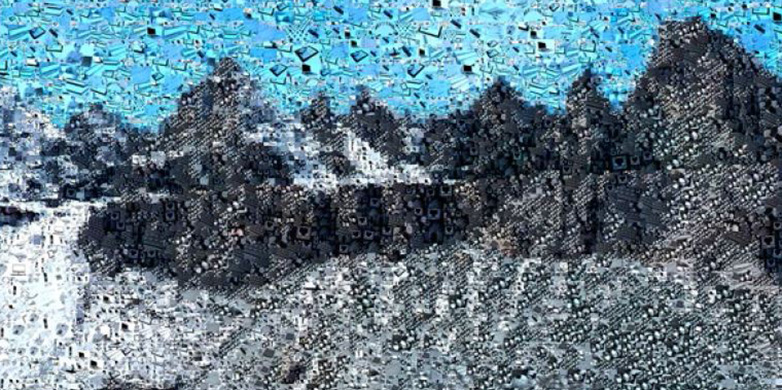A sharper image of the earth’s structure
Today, thanks to earthquakes, we know fairly accurately how the solid earth is constructed. Geophysicist Andreas Fichtner is now taking things a step further: he gains new insights into our planet’s interior from seemingly useless data.
What does the earth look like on the inside? Considering that this part of the world is completely out of bounds, we have got a remarkably differentiated picture of which structures are hidden away beneath the earth’s surface. We have come a long way from the rough breakdown of the earth into a solid inner and a liquid outer core made of metal, which is surrounded by a mantle of siliceous rock and a thin crust as an outer shell. For instance, geophysicists are in the process of reconstructing in detail the powerful convection currents in the earth’s outer crust that generate the earth’s magnetic field. And we now also know that there is a zone underneath the volcanic island of Iceland made of hot rock that extends to a depth of 1,000 kilometres.
These glimpses inside the earth were made possible by geophysical readings at the earth’s surface. One key instrument, for instance, are seismic waves: if an earthquake occurs somewhere on earth, the tremors travel straight across the entire world. If you now register these waves at different places using the right measuring devices, you can use their propagation rate to draw inferences about the structures that these waves crossed inside the earth.
Messages amidst the noise
However, this method has a drawback: earthquakes do not occur uniformly on earth, but preferably along the edges of the tectonic plates. And the measuring stations are not distributed evenly either, which means that the picture we have of the earth’s interior is not equally differentiated everywhere. Andreas Fichtner, an assistant professor of computer-based seismology and head of the Solid Earth Dynamics Network, which coordinates CPU-intensive geophysical activities in Switzerland, is now developing a process as part of the GeoScale project that should plug this gap.
Fichtner uses data that at first glance seems useless: the chaotic background noise that the seismometers constantly record. “Most of the time, they only record minute vibrations from which no clear signal is discernible”, he explains. “These tremors are caused by various factors: for instance, sea waves, turbulence in the atmosphere or even human activity.”
Together with his doctoral student Laura Ermert, Fichtner has now resorted to a trick to filter a signal out of this data all the same: they take the datasets from two stations at a time and compare them using a correlation function. “If you correlate the data from one station with that of many others, you end up with a pattern as if an earthquake had taken place at the station in question”, explains Fichtner. “We can then process these artificial earthquake signals in exactly the same way as normal earthquake signals.”
Hundreds of thousands of correlations
Nevertheless, it still takes a lot of computer work to get to that stage. Every seismometer records a signal twenty times per second, which adds up to dozens of gigabytes over several years. These vast amounts of data need to be processed first, as the readings can become distorted slightly by the instruments. Once the values have been revised, the correlations have to be performed. “If you want to correlate 1,000 measuring stations in pairs, you need 500,000 calculations”, explains Fichtner.
The result of the calculation work, he is convinced, will yield a much more accurate picture of the earth. “We will especially be able to unlock the structures beneath lesser-researched regions such as Africa, South America and Siberia with far greater precision.” And Fichtner would also like to clear up another unresolved issue. “Thanks to the new data, we might be able to understand better which factors actually produce the chaotic background signal – and possibly even fathom what interactions there are between the seas, the atmosphere and the solid earth more effectively.”
The article was originally published in the current issue of Globe.

